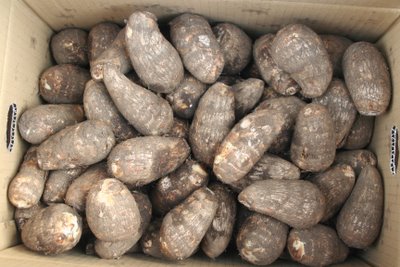
Look at the broom! It is nothing out of the ordinary here in Japan. Workers use them on the streets here. This one is huge. It is as tall as I am. I am 5'6". The bristles are as high as my waist. Actually, this one is extraordinarily large. It must be industrial size!
We had a party in our garden last weekend. Twelve children came. They bobbed for apples. They dressed up in costumes from our costume chest, and they hit a pinata. They also ate a lot.
I had bought this pumpkin a few days before. At the party, I cut open the top of the pumpkin. I asked, "Who wants to pull the top off?" Everyone wanted to! They did junken, or rock, scissors, paper to decide who would get to do it. Then they each wanted to scoop out the seeds from inside. They lined up and took turns. They washed their hands at the garden sink afterwards. They each carved one or two parts of a jack o' lantern's face. This pumpkin ended up with four faces!
They went to a nearby park to play dodgebee (with a soft frisbee). It was getting dark (around 5:00) so I went down to give them glowing bracelets. I had bought them for the kids to wear home. Everyone had fun. Three kids had never been to a Halloween party.
















































